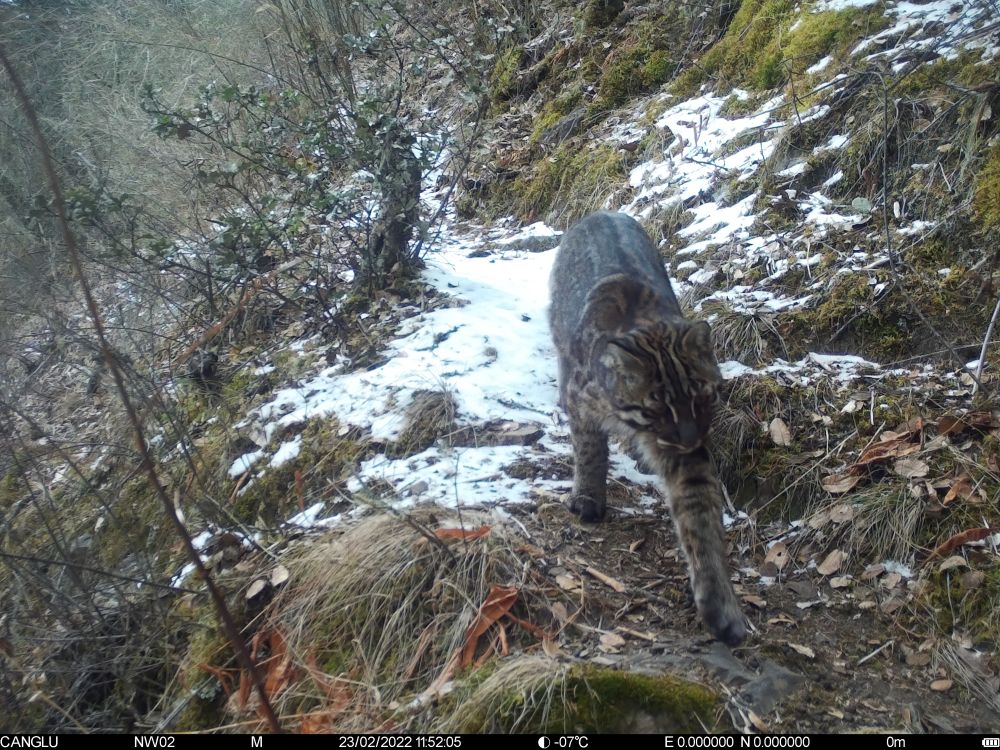Rare! For the first time, images of the Asian golden cat were recorded in Nagqu, Tibet
On May 16, our reporter learned from the Nagqu Forestry and Grassland Bureau of Tibet Autonomous Region that in the Nagqu Biodiversity Survey Project, jointly carried out by the Bureau and Shan Shui Conservation Center, images of the national class-I protected animal —Asian golden cat was recorded in Lhari County of Nagqu for the first time, which is also the highest altitude distribution record of golden cat in the world so far.
The Asian golden cat feeds on pheasants, small ungulates, rats and other small mammals, and is rated as “Endangered” in the ” Redlist of China’s Biodiversity ” newly released by the Ministry of Ecology and Environment and the Chinese Academy of Sciences in 2021.
This is a footage of the Asian golden cat recorded by an infrared camera. (Provided by Shan Shui Conservation Center)
Nagqu Forestry and Grassland Bureau and Shan Shui Conservation Center had set up monitoring areas in 11 counties and districts in Nagqu City. Each monitoring area selects 10 to 15 grids of 5×5 kilometers, and 1 to 2 camera traps are deployed in each grid. At present, a long-term monitoring network of 197 infrared camera traps has been deployed, with a total of more than 60,000 camera trap working days.
This is a footage of the Asian golden cat recorded by an infrared camera. (Provided by Shan Shui Conservation Center)
“Asian golden cats’ body color varies. Generally, individuals in low-altitude areas are mainly dark red and black, while individuals in high-altitude areas are mainly spotted and reddish-brown. The Asian golden cat photographed this time is a spotted individual.” Zhao Xiang, conservation director of Shan Shui Conservation Center, introduced to reporters.
According to experts, the records of Asian golden cats in recent years are only found in northern and western Sichuan, southern Shaanxi, western and southern Yunnan, and southeastern Tibet, which are scattered. Studies have shown that the geographical range of golden cats has decreased by 68% in the past two decades, and it may continue to decrease in the future.
“The appearance of the Asian golden cat in Nagqu represents the ecological improvement of our region. In the future, we will further expand the monitoring network, establish a basic biodiversity database, and carry out long-term systematic research and investigation.” Said Mao Shiping, the deputy director of Nagqu Forestry and Grassland Bureau.
Xinhua News Agency reporter Tian Jinwen
Chinese-English Translate: Guo Menglan



